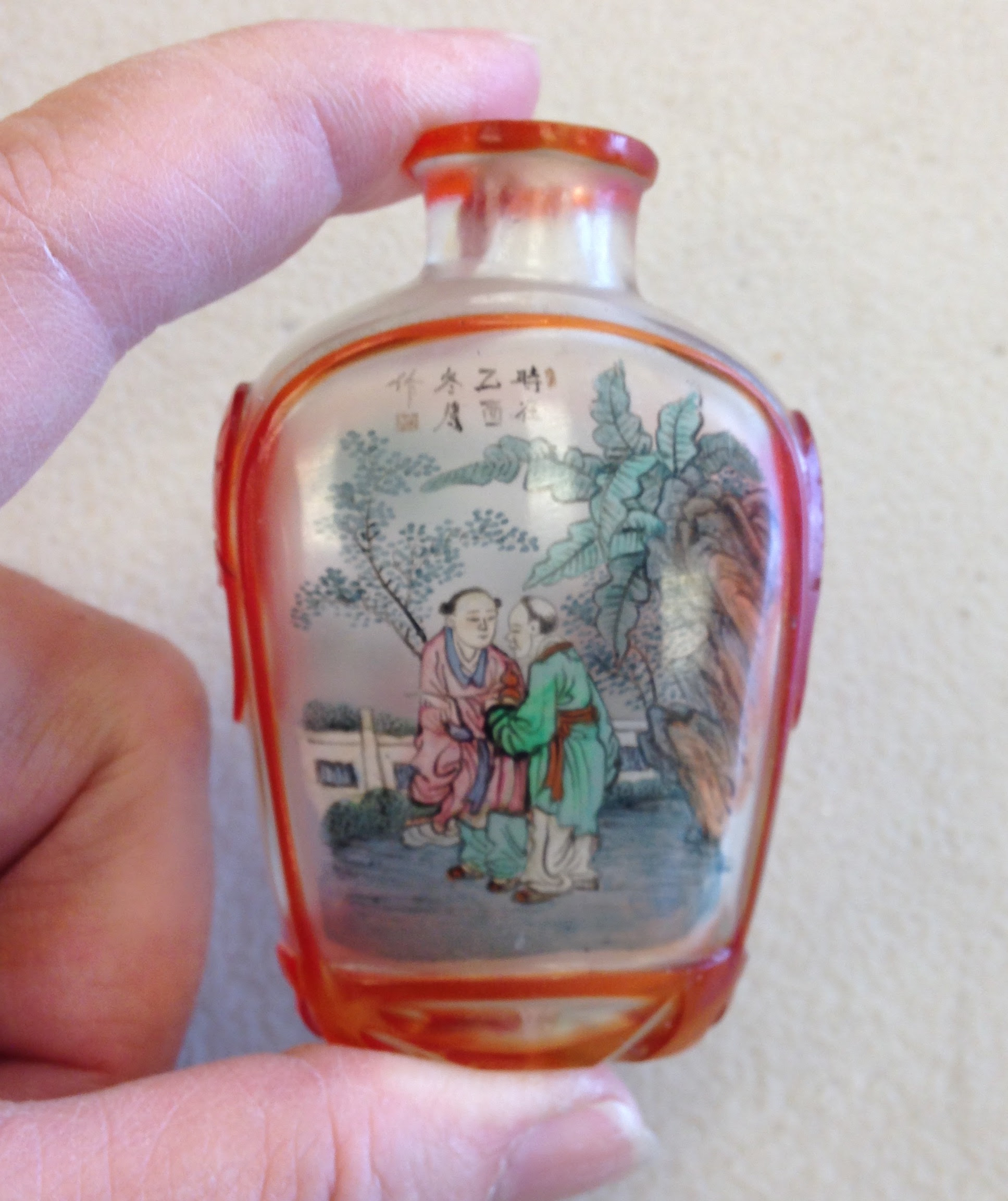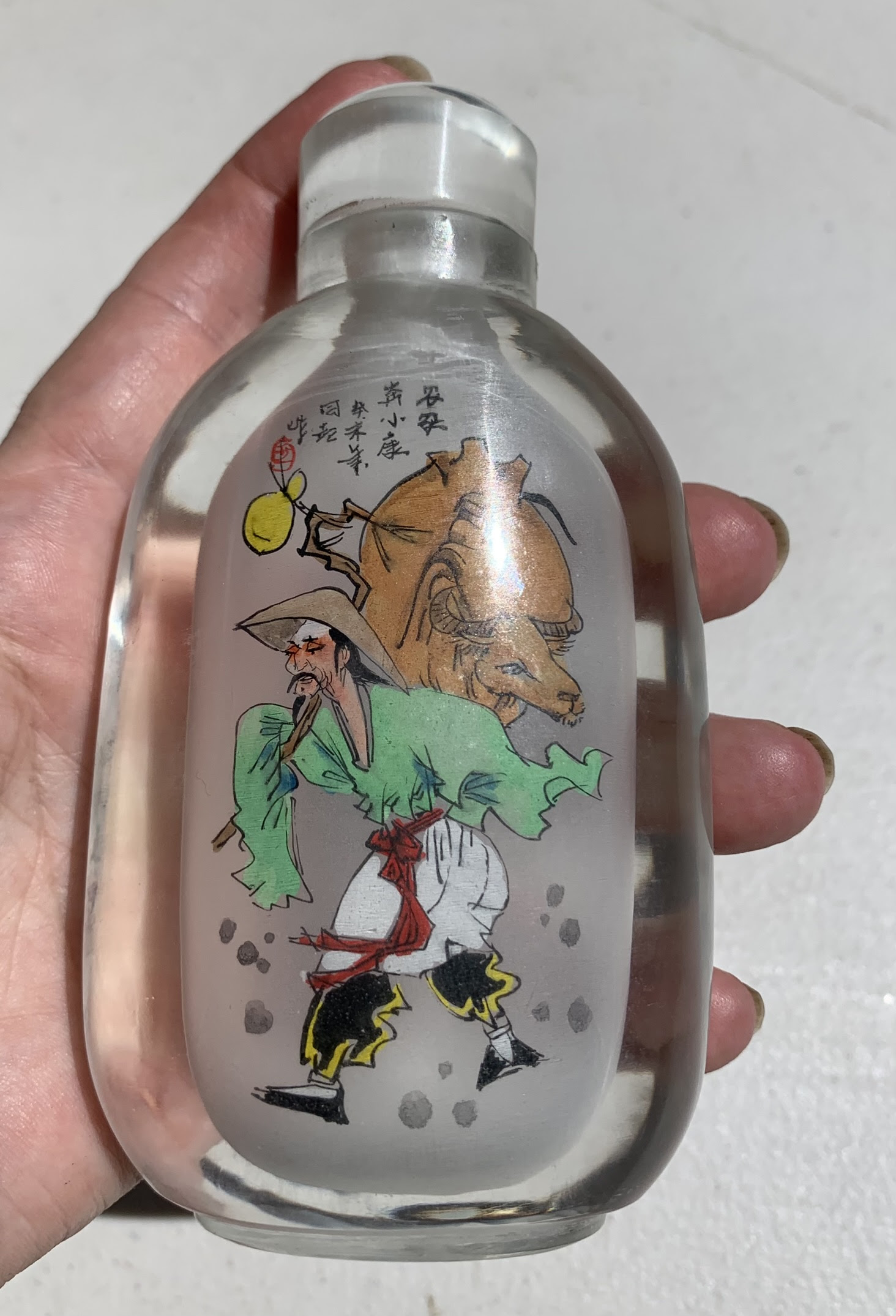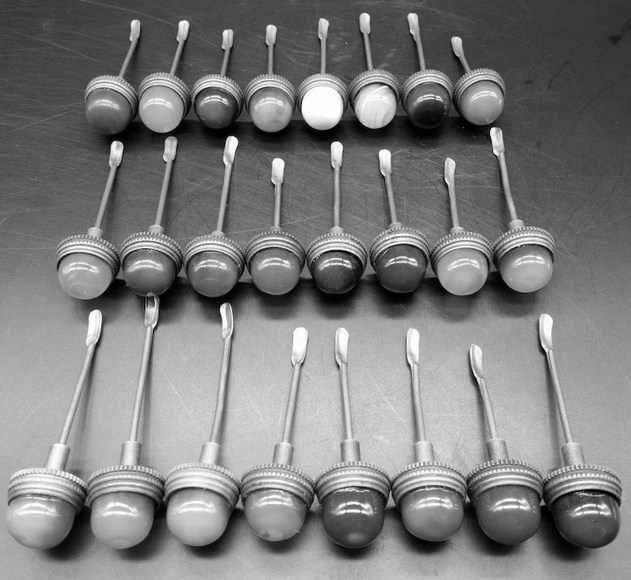Inside-Painted Chinese Snuff BottleThis 4″ Chinese Snuff Bottle sold at a QBO Beehive. Today’s popular nicotine delivery systems include cigarettes, pipes, chewing tobacco, vape pens and prescription patches to help you quit the aforementioned habits but centuries ago there was another popular option: finely ground tobacco you sniffed, AKA snuff. Snuff made you sneeze while giving you a nicotine boost absorbed through the inside of your nose. You administered it in a pinch or with a tiny spoon attached to the underside of the bottle’s lid, as seen on these reproductions.
Tobacco was introduced to Europe from the Americas where it had been a sacred, ceremonial plant. In Europe it was both medicine and recreational drug, smoked in pipes or sniffed as snuff. From Europe tobacco made its way to Imperial China via Portuguese traders, where it became popular in the Beijing royal court during the 16th century. It was smoked medicinally, in pipes. When the last Chinese Dynasty, the Qing, came to power, smoking leaf tobacco was outlawed but powdered snuff stayed legal as a medicine for colds, headaches and stomach problems. Medicine was carried in bottles, so snuff ended up in bottles, too, rather than the snuff boxes used by Europeans.
Over the next centuries snuff grew popular with the upper, merchant and scholarly classes in China and snuff bottles became personal luxuries, gifts and even bribes since they were small, desirable and expensive. They could be made of almost anything: jade, porcelain, rhino horn, ivory, wood, coconut shell, lapis lazuli, cork, chalcedony, jasper, carnelian, malachite, quartz, metals, tortoiseshell, turquoise, agate, mother-of- pearl, ceramic, and glass, like this one here. Many bottles are plain, but others were carved, enameled or painted. |
| Decorative calligraphy is usually a well-known poem or saying wishing the bottle’s owner wealth, health, good luck and longevity. Popular symbolic and auspicious animal motifs include horses, hares, cranes, snakes, fish or mythological creatures such as dragons and three-legged “money toads”.
This bottle has calligraphy front and back, and a farmer carrying a lucky yellow gourd on a stick while leading an ox, all rendered in a technique called inside-painting. These tiny masterpieces are painted on the inside of the bottle by manipulating brushes through the 1/4″ wide neck opening, an excruciating task which some artists preferred to do lying on their backs. One bottle could take anywhere from a week’s work to half a year. Masters of inside bottle painting were well-enough regarded in their own time that we still know some of their names: Zhou Leyuan, Ma Shaoxuan, Ding Erzhong, Ye Zhongsan and Gan Xuanwen, also known as Gan Xuan. 
Between the end Qing Dynasty in the 1920s and the rise of the communist People’s Republic of China in the 1940s, frivolities like snuff went out of fashion.
However, the craft of inside-bottle painting has enjoyed a resurgence as demand from collectors created a robust market. Todayantique snuff bottles can sell anywhere from $2,000 up to hundreds of thousands, while reproductions can be had for under $20: either one might be found at a QBO sale. Although they are just the right size, DO NOT use inside-painted snuff bottles to store perfume or essential oils – liquids may damage the delicate paint. If you’d like to learn more about Chinese snuff bottles, check out the Snuff Bottle Society website: https://snuffbottlesociety.org |




